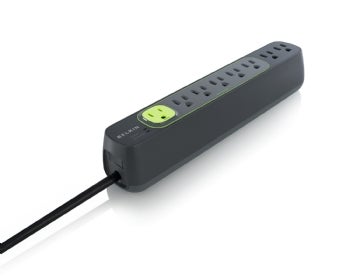Lewis
Member
Vampire Power Reality Check: What Tech Gear Sucks the Most Power?
We break down what tech gear costs you the most on your electric bill even when it's not actively being used.
Feb 1, 2012
 Bloodthirsty vampires are as fake as the fangs on Robert Pattinson's character in The Twilight Saga, but real vampire power hogs lurk in your home and should make you nervous. If your house is typical, you have dozens of electronic gadgets and other gear sucking up energy unnecessarily, resulting in surprisingly high electricity costs.
Bloodthirsty vampires are as fake as the fangs on Robert Pattinson's character in The Twilight Saga, but real vampire power hogs lurk in your home and should make you nervous. If your house is typical, you have dozens of electronic gadgets and other gear sucking up energy unnecessarily, resulting in surprisingly high electricity costs.
Vampire power is industry parlance for standby power consumed by electronics-- such as DVRs, cable modems, or a subwoofer--while they are switched off or not in use. A typical home has as many as 40 devices constantly drawing such standby power, amounting to 5 to 10 percent of residential electricity use, according to Lawrence Berkeley National Laboratory.
Here is a look at the tech world's worst offenders and their monthly costs (which can be increased by bad habits). I based cost by multiplying the national average cost of electricity per kilowatt-hour with the average standby energy consumption of each device. Energy figures are derived from a Lawrence Berkeley National Lab study.
Six Worst Offenders

Desktop
You leave your desktop on all the time. A desktop in idle mode consumes nearly the same amount of energy as it does in active mode because its memory, disc, and processor are all still running.
(Vampire cost: $7 month)

 Game Consoles
Game Consoles
You never turn off your game console after play. Game consoles are like specialized PCs with the same type of components inside. Leaving your game console on is comparable to leaving your computer on.
(Vampire cost: $6 month)

 Plasma or LCD TV
Plasma or LCD TV
Plasma TVs are the most culpable when it comes to vampire power sucking. They consume about two times more energy than LCDs.
(Vampire cost: $5 per month)
Cable (or Satellite) Box with HD DVR
Your DVR--when not recording--still chugs large amounts of energy.
(Vampire cost: $3 per month)

 Laptop
Laptop
If your laptop has a screensaver with images, it consumes more power than an idle laptop.
(Vampire cost: $1.50 month)
VCR/DVD Player
 You forget to turn off your DVD player after watching a film, and it stays on the Menu page for days. Your DVD player never rests when left on the Menu constantly reading material on the disc.
You forget to turn off your DVD player after watching a film, and it stays on the Menu page for days. Your DVD player never rests when left on the Menu constantly reading material on the disc.
(Vampire cost: $1 month)
Take a Bite Out of Energy Waste
Although individually each of these devices doesn't amount to a huge expenditure, all your household devices together can gobble between $100 and $160 per year in electricity. The U.S. Department of Energy says that $4 billion a year in electricity bills is wasted because of vampire power sucking.
The environmental costs are real too. Electricity, when generated by coal, has byproducts--sulfur dioxide, nitrogen oxides, and carbon dioxide. A 100-watt light bulb requires 714 pounds of coal to keep it running for an entire year. This creates 5 pounds of sulfur dioxide, 5 pounds of nitrogen oxides, and 1800 pounds of carbon dioxide as byproducts. Translation? “You’re not only spending more money than you have to, but you’re also contributing to climate change by releasing greenhouse gases,” says Cornell University Professor Joseph Laquatra.
You can fight vampire power in your home in two ways--and neither involves garlic or wooden stakes. First, we'll offer tips on how to use less electricity. The second way is to buy green power strips that can significantly reduce energy waste.
Tips
Vampire hunters say people need to put devices to sleep when they are not being actively used. A sleeping computer, for example, uses significantly less energy than one that is awake. You can change the power management features on your computer, so that it falls asleep, hibernates, or shuts down after a time of inactivity.
Another way to drive a stake into vampire power thieves is to think green at the register and when setting up your tech gear. Purchasing TVs with smaller screen sizes and changing picture settings can save you energy and dollars. A 32-inch LCD set uses about half as much power as a 52-inch LCD. Brighter pictures consume more power, so changing the contrast and backlight settings of your TV reduces light output and can cut energy usage by half.
Gear
 Belkin Conserve Smart AVFor those devices that draw large amounts of power when they are off--such as a game console--the best solution is to cut off AC power completely by unplugging them or putting them on an energy saver power strip. Such power strips are designed to cut power to devices that don't need it.
Belkin Conserve Smart AVFor those devices that draw large amounts of power when they are off--such as a game console--the best solution is to cut off AC power completely by unplugging them or putting them on an energy saver power strip. Such power strips are designed to cut power to devices that don't need it.
Here is how green power strips work: One outlet on the power strip is the control outlet and always stays on, while the other outlets on the strip go dead when devices aren't being used. The device plugged into the control outlet, such as a PC or TV, is always on. But when the wattage on the control outlet drops below a certain threshold, the power is killed to the remaining outlets on the power strip. For example, when you turn your HDTV off, the power is cut to your game console, sound system, and DVD player.
Sadly, your DVR is one of those devices that needs to stay on in order to refresh the program-guide data, download software, monitor the network for changes to channel lineups, and record at any time.
My colleague Lincoln Spector offers a roundup of vampire-slaying power strips. In addition, I recently wrote about the new Tripp Lite Eco-Surge green power strip that costs $30.
Experts say to do as much as you can, especially when it comes to changing your computer and TV settings, and find ways to power down other gear, because it will pay off in savings of hundreds of dollars in the long run.
PC World
We break down what tech gear costs you the most on your electric bill even when it's not actively being used.
Feb 1, 2012

Vampire power is industry parlance for standby power consumed by electronics-- such as DVRs, cable modems, or a subwoofer--while they are switched off or not in use. A typical home has as many as 40 devices constantly drawing such standby power, amounting to 5 to 10 percent of residential electricity use, according to Lawrence Berkeley National Laboratory.
Here is a look at the tech world's worst offenders and their monthly costs (which can be increased by bad habits). I based cost by multiplying the national average cost of electricity per kilowatt-hour with the average standby energy consumption of each device. Energy figures are derived from a Lawrence Berkeley National Lab study.
Six Worst Offenders

Desktop
You leave your desktop on all the time. A desktop in idle mode consumes nearly the same amount of energy as it does in active mode because its memory, disc, and processor are all still running.
(Vampire cost: $7 month)
 Game Consoles
Game ConsolesYou never turn off your game console after play. Game consoles are like specialized PCs with the same type of components inside. Leaving your game console on is comparable to leaving your computer on.
(Vampire cost: $6 month)
 Plasma or LCD TV
Plasma or LCD TVPlasma TVs are the most culpable when it comes to vampire power sucking. They consume about two times more energy than LCDs.
(Vampire cost: $5 per month)
Cable (or Satellite) Box with HD DVR
Your DVR--when not recording--still chugs large amounts of energy.
(Vampire cost: $3 per month)
 Laptop
LaptopIf your laptop has a screensaver with images, it consumes more power than an idle laptop.
(Vampire cost: $1.50 month)
VCR/DVD Player

(Vampire cost: $1 month)
Take a Bite Out of Energy Waste
Although individually each of these devices doesn't amount to a huge expenditure, all your household devices together can gobble between $100 and $160 per year in electricity. The U.S. Department of Energy says that $4 billion a year in electricity bills is wasted because of vampire power sucking.
The environmental costs are real too. Electricity, when generated by coal, has byproducts--sulfur dioxide, nitrogen oxides, and carbon dioxide. A 100-watt light bulb requires 714 pounds of coal to keep it running for an entire year. This creates 5 pounds of sulfur dioxide, 5 pounds of nitrogen oxides, and 1800 pounds of carbon dioxide as byproducts. Translation? “You’re not only spending more money than you have to, but you’re also contributing to climate change by releasing greenhouse gases,” says Cornell University Professor Joseph Laquatra.
You can fight vampire power in your home in two ways--and neither involves garlic or wooden stakes. First, we'll offer tips on how to use less electricity. The second way is to buy green power strips that can significantly reduce energy waste.
Tips
Vampire hunters say people need to put devices to sleep when they are not being actively used. A sleeping computer, for example, uses significantly less energy than one that is awake. You can change the power management features on your computer, so that it falls asleep, hibernates, or shuts down after a time of inactivity.
Another way to drive a stake into vampire power thieves is to think green at the register and when setting up your tech gear. Purchasing TVs with smaller screen sizes and changing picture settings can save you energy and dollars. A 32-inch LCD set uses about half as much power as a 52-inch LCD. Brighter pictures consume more power, so changing the contrast and backlight settings of your TV reduces light output and can cut energy usage by half.
Gear

Here is how green power strips work: One outlet on the power strip is the control outlet and always stays on, while the other outlets on the strip go dead when devices aren't being used. The device plugged into the control outlet, such as a PC or TV, is always on. But when the wattage on the control outlet drops below a certain threshold, the power is killed to the remaining outlets on the power strip. For example, when you turn your HDTV off, the power is cut to your game console, sound system, and DVD player.
Sadly, your DVR is one of those devices that needs to stay on in order to refresh the program-guide data, download software, monitor the network for changes to channel lineups, and record at any time.
My colleague Lincoln Spector offers a roundup of vampire-slaying power strips. In addition, I recently wrote about the new Tripp Lite Eco-Surge green power strip that costs $30.
Experts say to do as much as you can, especially when it comes to changing your computer and TV settings, and find ways to power down other gear, because it will pay off in savings of hundreds of dollars in the long run.
PC World





